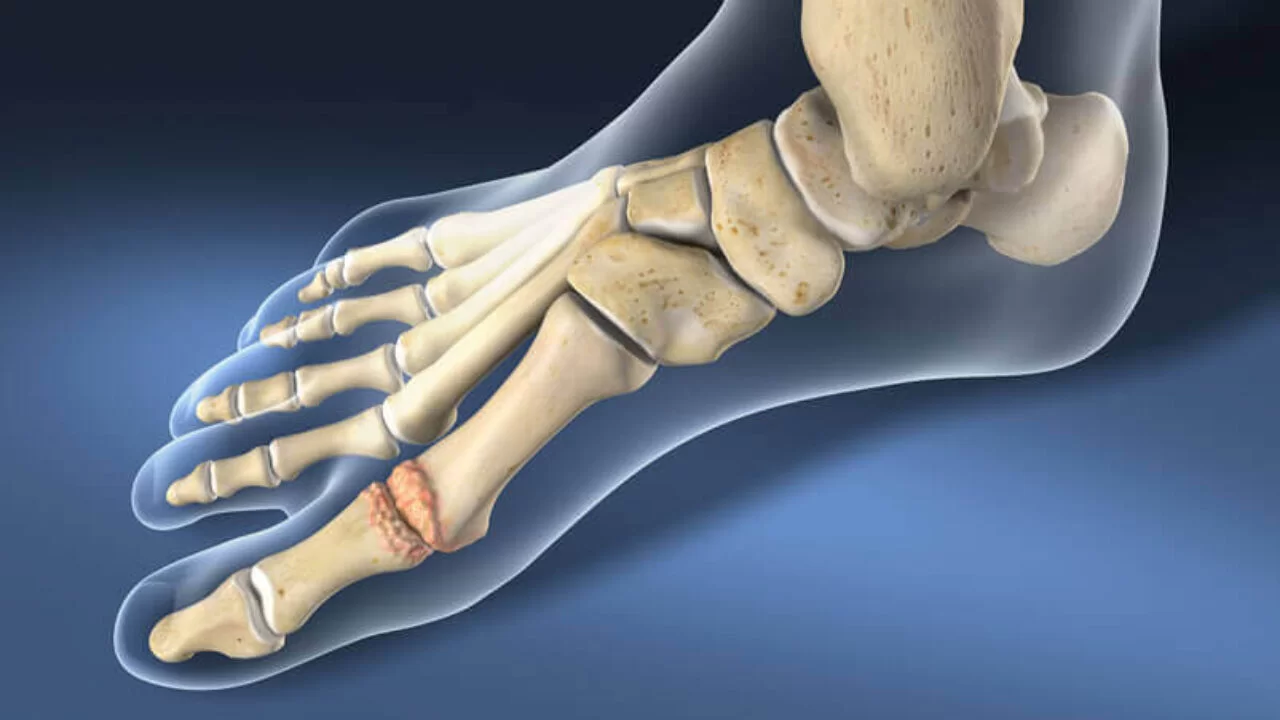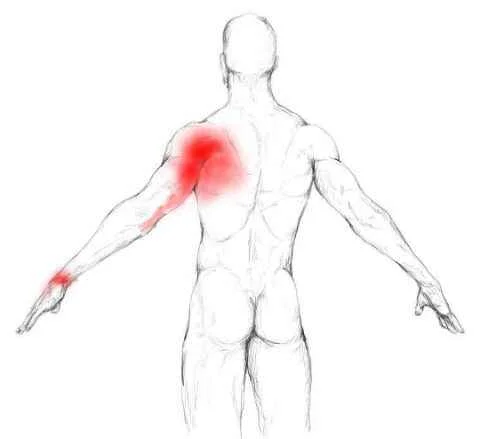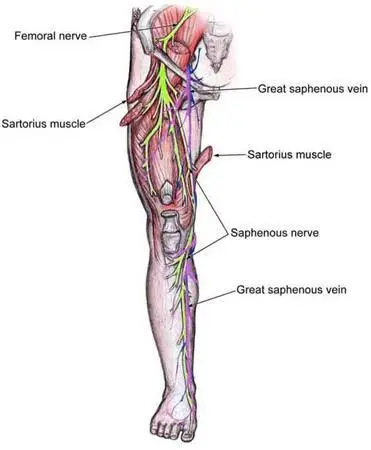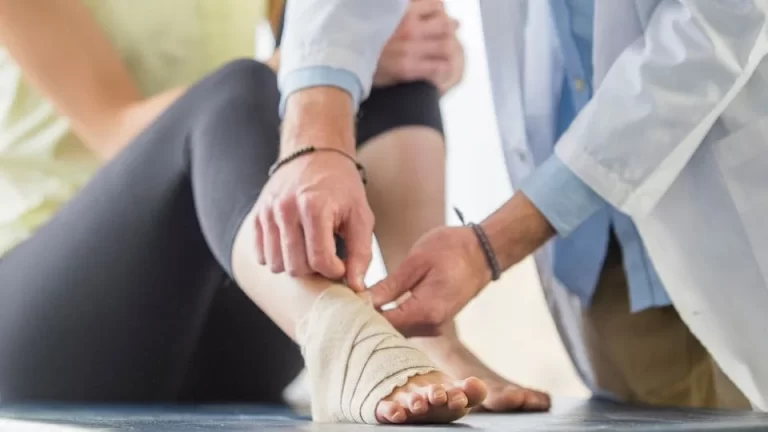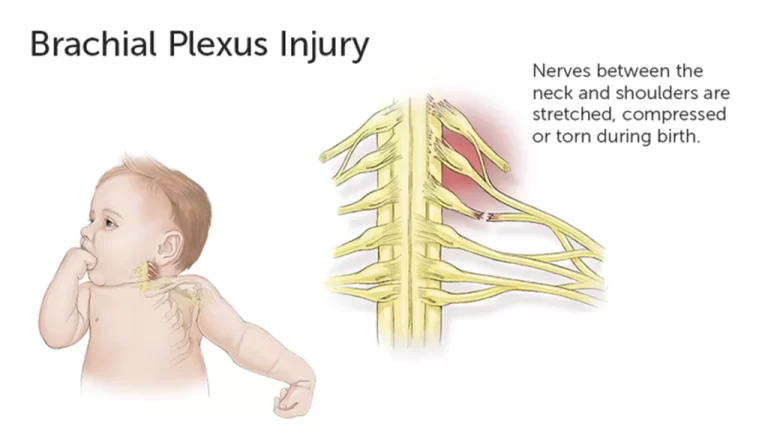Hallux rigidus
Table of Contents
What is Hallux rigidus?
Hallux Rigidus (also referred to as Hallux Limitus) is a degenerative disease leading to a decreased range of movement in the first metatarsophalangeal (MTP) joint of the big toe or great toe. This can affect normal gait function, specifically during the propulsive stage.
Hallux rigidus, sometimes known as turf toe or stiff big toe, is when you have a big toe ache. Hallux rigidus suggests a “stiff big toe” — the main symptom of the disease. Hallux rigidus is a variety of degenerative arthritis, a familiar type of arthritis. It’s sometimes known as “big toe arthritis.”
Clinically Relevant Anatomy
The bottom of the first MTP joint particularly is where degenerative arthritis is generally found. The joint is protected with articular cartilage, a shiny surfacing to cover the ends of the bones within the joint.
As this layering wears, degeneration happens until the bone is opposite the bone. Bone spurs form as part of this degenerative method and motion decreases. The normal range of movement is between 65 to 100 degrees.
Mechanism of Injury
Hallux Rigidus is a progressive disease where the great toe’s movement is reduced over time. A few causes are incorrect function or biomechanics and structural anomalies like displaced sesamoid bones as an impact of Hallux Valgus. Over time this shows osteoarthritis-OA and a decreased range of motion in the joint.
Epidemiology
It is most likely seen in middle-aged people but can grow during adolescence. Unlike a hallux valgus, men appear to be slightly more affected than women.
What are the symptoms of hallux rigidus?
Symptoms frequently start out mild and slowly intense over time.
Early signs and symptoms may involve:
- ache and stiffness in your big toe during the function
- swelling and inflammation around the junction or joint
- pain and stiffness that intense with cold, wet weather
As the disease progresses, you may see:
- ache even during rest
- a hard bulge that starts at the top of your foot
- inability to flex your big toe
- limping gait
- You may also feel pain in your knee joint, hip joint, or lower back if your symptoms cause you to limp or walk alterable than you usually do.
What causes hallux rigidus?
There’s no known cause of hallux rigidus, but various risk factors have been identified. Risk factors involve:
- Being female. Hallux rigidus is more general in women. Of the 110 participants involved in a 2009 cross-sectional research on the demographics of hallux rigidus, 66 percent were women.
- Family history. Having a family member with the disease seen to raise your risk of developing it yourself. This may arrive from inheriting a particular foot type or way of walking that can lead to the disease.
- Abnormal foot anatomy. Abnormalities in the form of your foot, like a long or raised first metatarsal bone, may raise your risk.
- Injury. Injuries, like stubbing your toe or spraining the joint or junction in your big toe, can result in hallux rigidus.
- Overuse. Regularly stooping and squatting can cause hyper use of the joint or junction in your big toe. Patients in certain jobs or who participate in sports that place a lot of pressure on the joints have a raised risk of developing the disease.
- Certain medical conditions. Osteoarthritis-OA and inflammatory diseases, like rheumatoid arthritis-RA and gout, can cause hallux rigidus.
Classification of Hallux rigidus
Hattrup and Johnson defined a radiographic classification that has evolved standard, and in fact relates completely well with the Regnauld grading:
- Grade 1: mild to moderate osteophytes formation but well joint space preservation
- Grade 2: moderate osteophyte formation with joint or junction space narrowing and subchondral sclerosis
- Grade 3: marked osteophyte formation and loss of the visible joint or junction space, with or without subchondral cyst formation
Coughlin changed the Hattrup and Johnson classification to make the Coughlin and Shurnass classification:
- Grade 0
- Dorsiflexion 40-60°
- Normal radiography
- No pain
- Grade 1
- Dorsiflexion 30-40°
- Dorsal osteophytes
- Minimal/ no other joint changes
- Grade 2
- Dorsiflexion 10-30°
- Mild to moderate joint narrowing or sclerosis
- Osteophytes
- Grade 3
- Dorsiflexion less than 10°
- Severe radiographic changes
- Constant moderate to intense pain in extremities
- Grade 4
- Stiff joints
- Severe changes were seen in loose bodies and osteochondritis dissecans
Diagnosis
Doctor Examination
If you have a problem flexing your toe up and down or see that you are walking on the outside of your foot because of an ache in the big toe, it’s essential to see your doctor or physician make a diagnosis.
Hallux rigidus can be easier to manage when the disease is recognized early. If you wait until you see a bony bulge on the top of your foot, bone spurs will have already formed, arthritis may already have set in inside the joint or junction, and managing the disease may be more inclusive.
Physical Examination
Your doctor or physician will examine your foot and observe for proof of bone spurs.
They may move the big toe around to see how much movement is possible without causing aches. Moving the toe in different directions will also assist decide whether the ache is deep or limited to the bulge on the top of the toe joint. Knowing this will assist your doctor or physician to decide which treatment to suggest.
Imaging Tests
X-rays. Your doctor or physician may select to get X-rays of your foot. X-rays will display the area and size of any bone spurs, the degree of arthritis deep in the joint or junction space, and cartilage loss.
Treatment of Hallux rigidus
Nonsurgical Treatment
- Over-the-counter medications. Your doctor or physician may suggest pain relievers, like oral or topical non-steroidal anti-inflammatory medicines (NSAIDs), to assist to relieve the pain and decreasing the swelling.
- Injections. A small corticosteroid injection into the metatarsophalangeal – MTP joint can be both diagnostic and therapeutic: it is sometimes used to verify the diagnosis of hallux rigidus or to manage aches in people who have not found relief with other nonsurgical treatments but are not a good patient for surgery. A corticosteroid injection will not fix the issues, but it has the potential to give pain relief for several months.
Physiotherapy treatment in Hallux rigidus
Hallux Flexion and Extension
Sit at the edge of a chair in a sitting position and place your involved foot on top of your knee joint.
Clasp your toes and slowly pull them towards your heel.
To stretch properly, keep a straight line from your shin to your toes. Be cautious not to pull your foot upwards.
You’ll sense a stretch at the bottom of your toes.
Pull to strengthen. The stretch should be severe but shouldn’t cross your ache threshold.
Hold for 2 minutes if you can.
Then return to your starting position, straighten your leg, and bend your toes.
With one hand, hold your heel in place do not move. With the other hand, bring under your toes and drag them back.
Maintain your foot straight, careful not to flex it up or down.
You’ll sense a stretch in the ball of your foot.
Maintain pulling your toes back to amplify the stretch.
Hold for 2 minutes as you can.
Return and wiggle your toes or make a round with your foot.
Repeat on the opposite foot if required.
Foam Roll Massage
A foot is placed on top of the Mini Massage Ball in a standing position.
Put the ball of your foot on top of the Mini Massage Ball. Roll the ball so that ball under your big toe.
Make small rounded movements along the inside edge of your foot, rolling towards your heel.
When you bring a sensitive spot, raise the stress and massage the location until you sense the tension release.
You can continue rolling for about 1 minute. Stop when you bring your heel.
Put the Mini Massage Ball under your other toe (eg. your long toe) and repeat it.
Repeat the Sole Foam Roll Massage on the opposite foot if required.
Soleus Stretch off a step
Stand with your heels off the rim of a step
Flex your knee joints while gently lowering your heels
Stop and maintain once you feel a stretch on your Achilles Tendon
Hold for 45 seconds
Repeat it 3-4 times daily
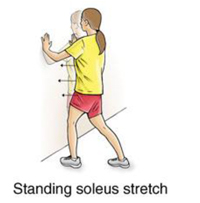
Hallux Rigidus Stretch For Mild Symptoms
Standing upright and facing a step or wall.
Flex your knee joint while maintaining your heel on the ground
Keep your knee as close to the wall/step as possible
Hold it for 45 seconds
Repeat 3-4 times daily for both sides
Single Leg Balance On a Cushion
Stand on one leg with your foot placed on a cushion
Keep your other leg out in front
Focus on a particular point in front of you to assist with stability
Hold it for 60 seconds
Repeat it 3-4 times daily with both sides.
Soleus Muscle Strengthening
Stand upright with both knee joints are flexed
Keep the flex in your knee joints while raising your heels off the ground
Gently return to your beginning position to complete one repetition
Repetitions no. are 25
Sets no. are 3
Flexor Hallucis Longus Strengthening
Cover a resistance band across the big toe
Down the big toe to the ground opposite to the resistance band maintaining the other toes still
Gently release the big toe upwards to do one repetition
Repetitions no. are 15
Sets no. are 3
Towel Curl
The towel curl assists to build strength in the big toe and should be tried when you have proper joint mobility. After you’ve adjusted to this exercise while sitting, you can raise the intensity by doing the exercise while standing.
While sitting, put a small hand towel on the floor and rest your involved foot on top of it.
Rumple the towel toward you by bending your toes, and then thrust the towel far from you by spreading out your toes.

Toe Press, Point, and Curl
This exercise grips your whole foot and assists in increasing mobility, strength, and overall balance. The study has shown that toe curl exercises can increase the quality of life, decrease pain, and enhance the capability to perform daily activities.
Sit in a straight-back chair in a sitting position with your feet flat on the ground.
Push your toes into the floor and lift your heel.
Point your toes while maintaining your heel lifted (first and second toes keep touching the floor).
Bend your toes under so the tops of the toes are touching the floor, and maintain your heel lifted.
Cycle through the three motions, holding to hold each position for five seconds. (You can do this 1 foot at a time or with both feet.)
Toe Splay
Toe splaying points to the muscles within your foot, assisting you to gain control and strength in this location.
Sit in a straight-back chair in a sitting position with your feet resting on the ground.
Widen your toes out as wide as you can and maintain this position for five seconds. (You can do this with 1 foot at a time or with both feet.)
If that’s too comfortable, you can twist a hair tie or rubber band around your toes before you widen them out to add some extra resistance.
Marble Pickup
This strengthening activity can also be done with small household things like dice. Start with four or five and do the exercise on each side, finally working your path up to the below-mentioned ten to 20 marbles.
Sit down in a chair in a sitting position.
Set ten to twenty marbles out in front of you on one side of the chair (either in bowls or on a mat).
Helping the toes of one foot, clasp one marble at a time and move it to the opposite side of the chair.
Once you’ve shifted all the marbles, do a similar thing to return them one by one to where they were when you began.

Toe Salutes
This is another well-stretch that constructs strength. The aim is to go gently to remain in control of your other toes, which should stay on the floor.
Sit in a chair in a sitting position with your feet relaxed on the floor under your knees.
Lift the big toe of your right foot off the floor and maintain it there for five seconds while maintaining the other toes on the floor.
Return your big toe to the floor.
Then raise your other four toes off the floor while maintaining your big toe on the floor and keep them there for five seconds.
Finally, return them to the floor. Do the same exercise with your opposite foot.
Toe Squeezing
Toe squeezing points to the muscles within your foot and build up them. These muscles play an important role in overall foot flexibility, stability, and shock absorption when walking or running.
Put foam or flexible plastic dividers between your toes (you can search for these online and buy them as pedicure toe separators).
Press your toes together for ten seconds, then relax.
Resisted Toe Flexion
This strengthening activity may need some mobility work before trying it. If you feel pain while trying this, stop and return to slower exercises goal of increasing the range of movement. If you search this exercise too comfortable with a light-resistance band, trade up for a higher-resistance selection.
Cover a light-resistance band near the back of your big toe.
Maintain the ends so that there’s light pressure on the band when your toe is indicated up toward your ankle.
Push your toe opposite the band, back toward the ground to be in line with the other toes.
Ice
Using ice packs on the toe may also temporarily assist in decreasing inflammation and maintaining your symptoms. Do not use ice straight on the skin.
A contrast bath uses alternating cold water and hot water to decrease inflammation. You’ll require two buckets, one with water as cold as you can bare it and the other with water as warm as you can bare it. Drained (soak) your foot in the cold water for thirty seconds, then instantly place it in the hot water for thirty seconds. Constantly alternate between cold water and hot water for five minutes, ending with the cold water. You can take contrast baths up to three times a day. However, be cautious to avoid excessive temperatures in the water, particularly if your feet aren’t very sensitive to heat or cold.
Footwear
Wearing a shoe with a large toe box will decrease the stress on the top of the toe. High heels are not suggested. Your doctor or physician may suggest that you get a stiff-soled shoe with a rocker or roller base design. Frequently, a standard shoe with a stiff carbon fiber insert (known as Morton’s extension insert) or metal plate inserted in the sole of the shoe will decrease pain. These types of shoe modifications assist the foot when you walk and decrease the quantity of bend in the big toe, which decreases pain and inflammation.
Surgical Treatment
If nonsurgical treatment approaches are not beneficial, your doctor may suggest surgery.
- Cheilectomy. Cheilectomy has usually suggested in people who have mild or moderate hallux rigidus. It includes removing the bone spurs as well as a part of the big toe bone so that the toe has more space to bend.
- Arthrodesis. Fusing the bones together (arthrodesis) is frequently suggested when the injured to the big toe’s cartilage is severe. During arthrodesis, your doctor or physician will remove the injured cartilage and use screws, pins, or a plate to stabilize the joint or junction in a permanent position. This will permit you to walk easily and possibly wear low-heeled shoes. Slowly, the bones will mature together, eliminating the toe joint or junction completely. This means that you will not be capable to flex the toe at all. However, arthrodesis is the most reliable path to decrease pain in people with severe hallux rigidus, or in those who fail the cheilectomy.
- Arthroplasty. Older people who put some functional demands on their feet may be candidates for joint or junction replacement surgery (arthroplasty). During the process, your doctor or surgeon will remove the MTP joint or junction surfaces and implant an artificial joint. This method may decrease pain and preserve joint movement.
Are there complications with hallux rigidus surgery?
While complications are likely after any surgery, they rarely occur after hallux rigidus surgery. Complications can involve:
- Infection
- Joint stiffness
- Arthritis progression
- Deformity coming back (recurring)
- Persistent swelling
Differential Diagnosis
- Turf toe
- fracture
- gout
- rheumatoid arthritis-RA could be a few other causes of pain and stiffness in the 1st MTP joint.
Can I treat hallux rigidus at home?
There’s no path to slow down the progression of hallux rigidus on your own self. But there are different things you can do to decrease pain and inflammation in your big toe.
Try the following at home by yourself:
- Use cold and heat some times a day.
- Immerse your feet, alternating between cold water and warm water.
- Eat nonsteroidal anti-inflammatory drugs, like ibuprofen (Advil).
- Avoid high-impact activities, like running.
- Wear assistive closed-toe shoes with stiff soles to prevent your big toe from flexing too much.
- If you search that you’re still having a lot of aches and inflammation, ask your doctor or physician about corticosteroid injections. These can give additional relief.
FAQ
You can’t maintain the disease from happening, but you can delay its progress if you:
Activity to maintain the joint mobile. Rest the joint or junction when you feel an ache. Wear well-fitting shoes with adequate space around the toes.
With the right management, you can decrease aches and inflammation so you can get back to surviving an active life. Some hallux rigidus surgeries may leave you with a limited capability to flex your toe, but you can yet be active.
If you formed symptoms of hallux rigidus, see your provider or doctor. Besides aches, signs involve walking on the outside of your foot or a problem bending your toe. Treatment is more effective when a healthcare or doctor’s provider diagnoses the issue early.
Early conservative management options that offer a decrease in pain and may delay the progression of hallux rigidus involve: Wearing shoes with plenty of space for the toes, preferably shoes with stiff bases. Females should avoid high heels, particularly above 2½ inches. Shoe orthotics to fix abnormalities.
Cause. Hallux rigidus may be the result of simple wear and tear or past traumatic damage to the big toe that has led to the injury of the articular cartilage over time. In addition, unwell foot alignments, like flatfoot or bunion, can form pressure on the MTP joint and lead to hallux rigidus.

